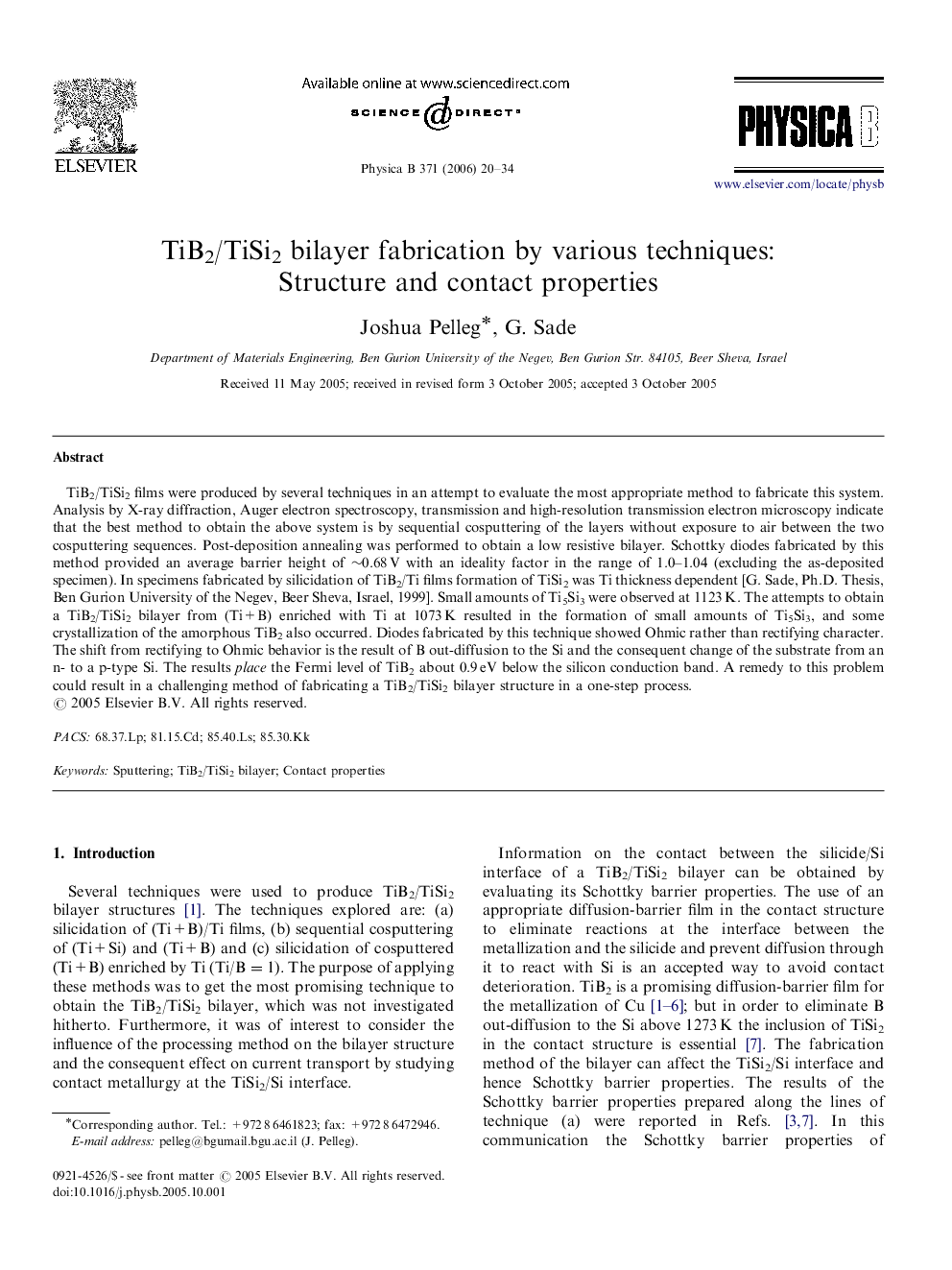| Article ID | Journal | Published Year | Pages | File Type |
|---|---|---|---|---|
| 1817041 | Physica B: Condensed Matter | 2006 | 15 Pages |
Abstract
TiB2/TiSi2 films were produced by several techniques in an attempt to evaluate the most appropriate method to fabricate this system. Analysis by X-ray diffraction, Auger electron spectroscopy, transmission and high-resolution transmission electron microscopy indicate that the best method to obtain the above system is by sequential cosputtering of the layers without exposure to air between the two cosputtering sequences. Post-deposition annealing was performed to obtain a low resistive bilayer. Schottky diodes fabricated by this method provided an average barrier height of â¼0.68Â V with an ideality factor in the range of 1.0-1.04 (excluding the as-deposited specimen). In specimens fabricated by silicidation of TiB2/Ti films formation of TiSi2 was Ti thickness dependent [G. Sade, Ph.D. Thesis, Ben Gurion University of the Negev, Beer Sheva, Israel, 1999]. Small amounts of Ti5Si3 were observed at 1123Â K. The attempts to obtain a TiB2/TiSi2 bilayer from (Ti+B) enriched with Ti at 1073Â K resulted in the formation of small amounts of Ti5Si3, and some crystallization of the amorphous TiB2 also occurred. Diodes fabricated by this technique showed Ohmic rather than rectifying character. The shift from rectifying to Ohmic behavior is the result of B out-diffusion to the Si and the consequent change of the substrate from an n- to a p-type Si. The results place the Fermi level of TiB2 about 0.9Â eV below the silicon conduction band. A remedy to this problem could result in a challenging method of fabricating a TiB2/TiSi2 bilayer structure in a one-step process.
Related Topics
Physical Sciences and Engineering
Physics and Astronomy
Condensed Matter Physics
Authors
Joshua Pelleg, G. Sade,
